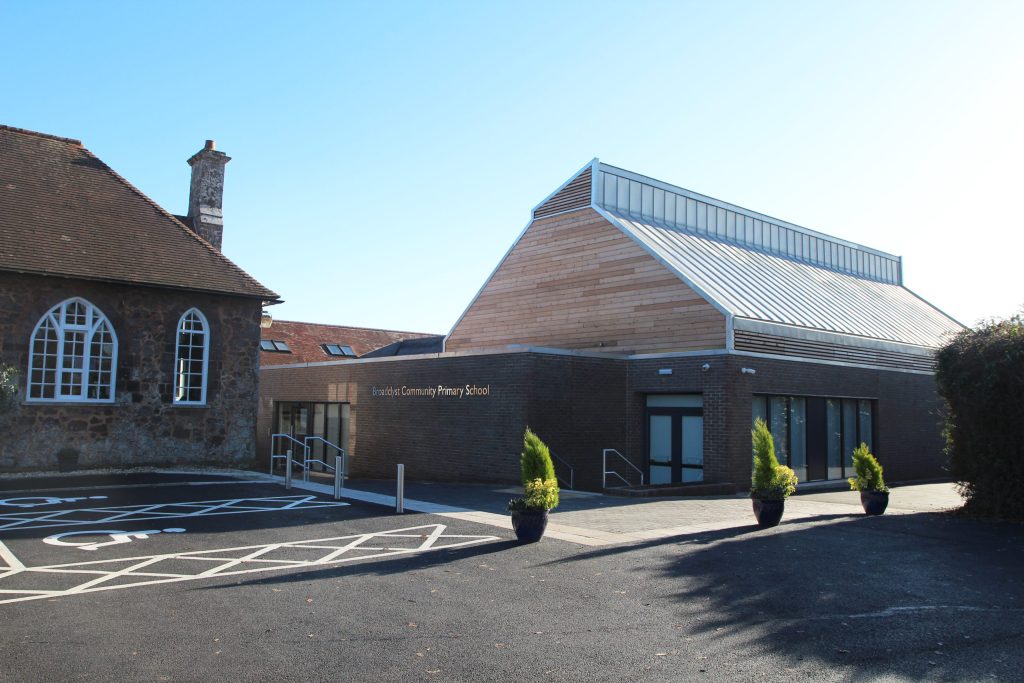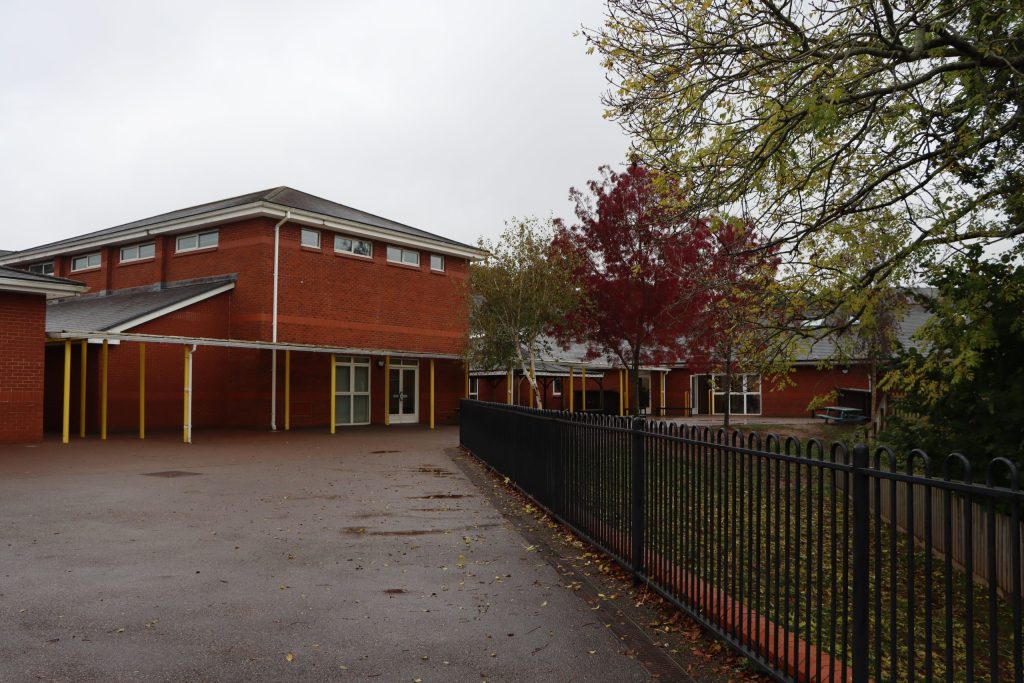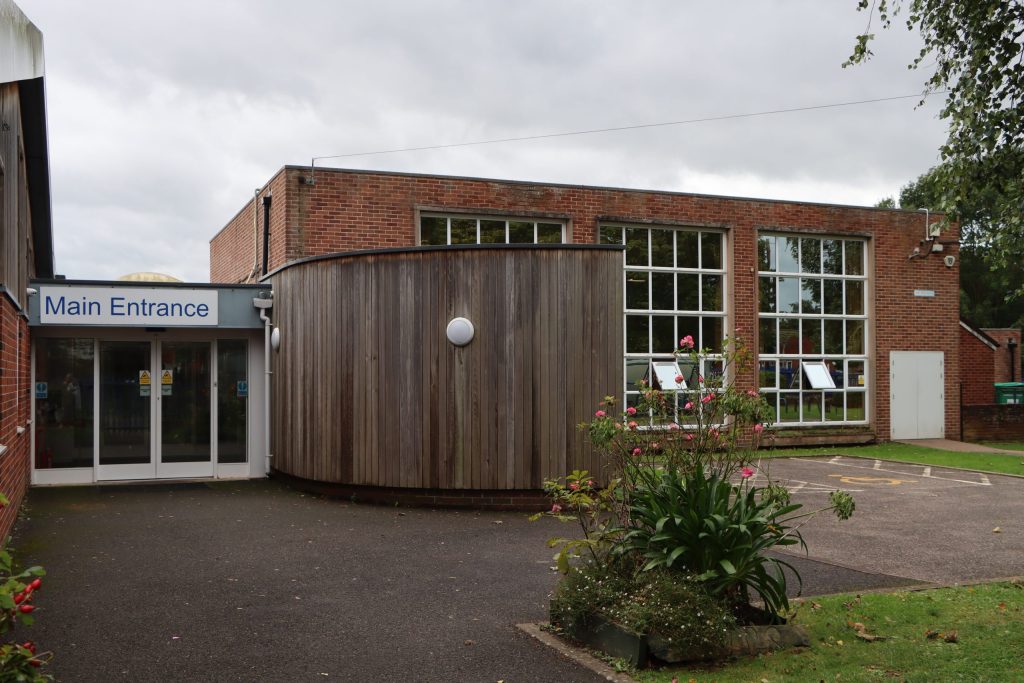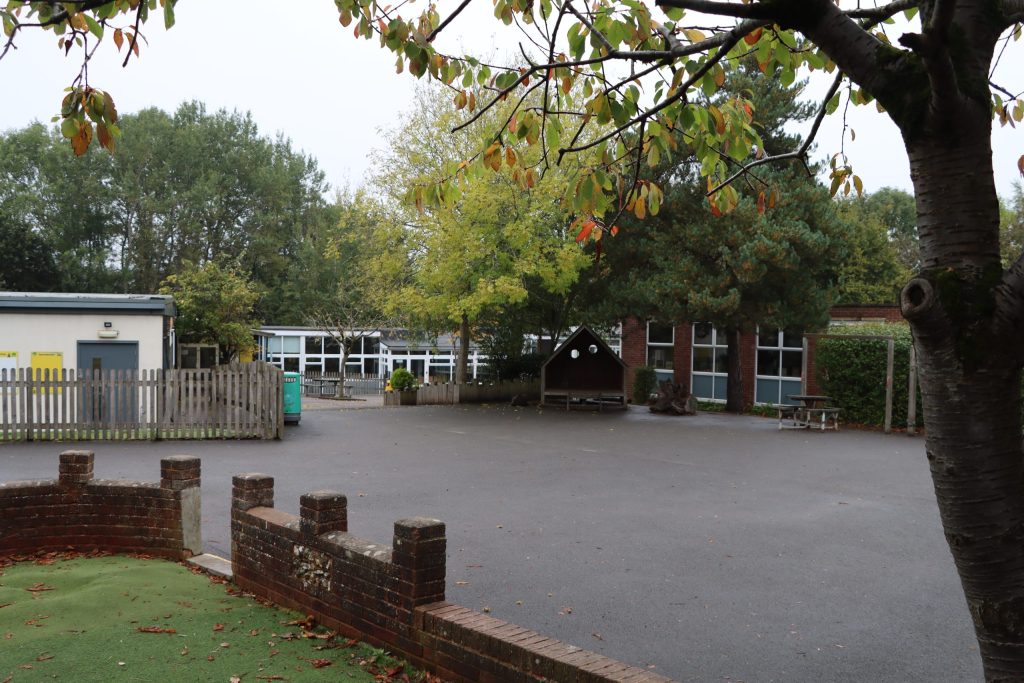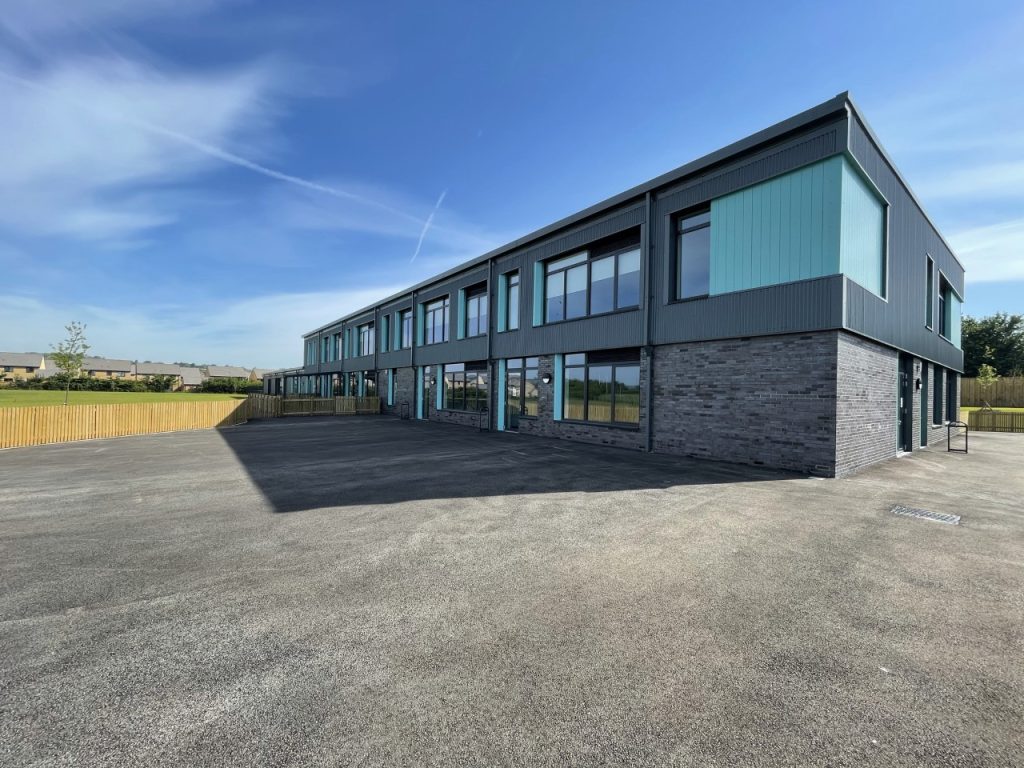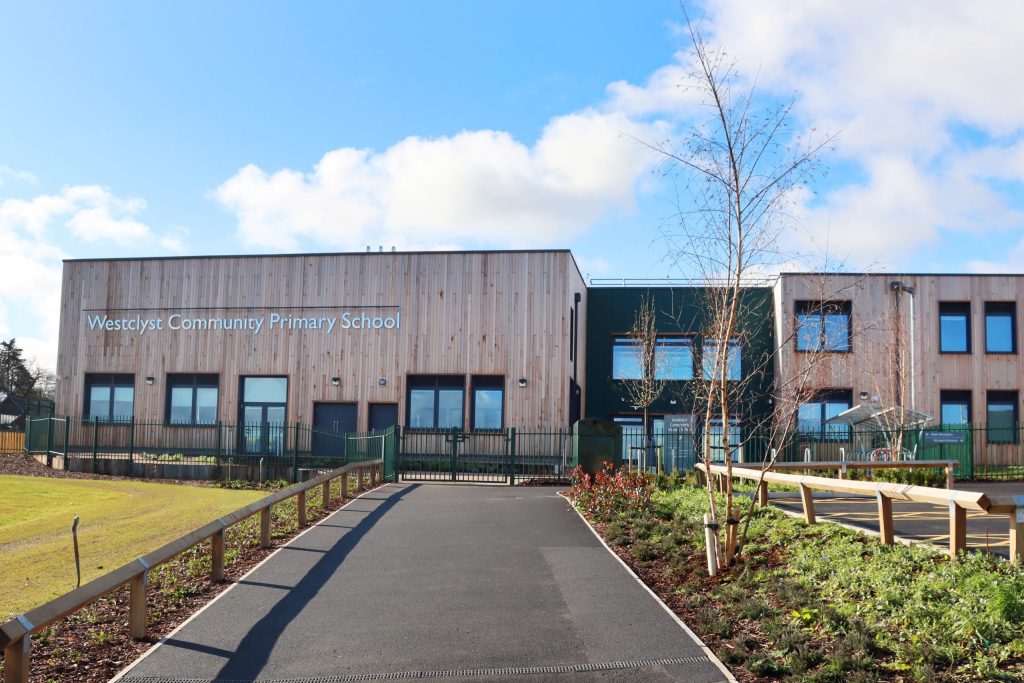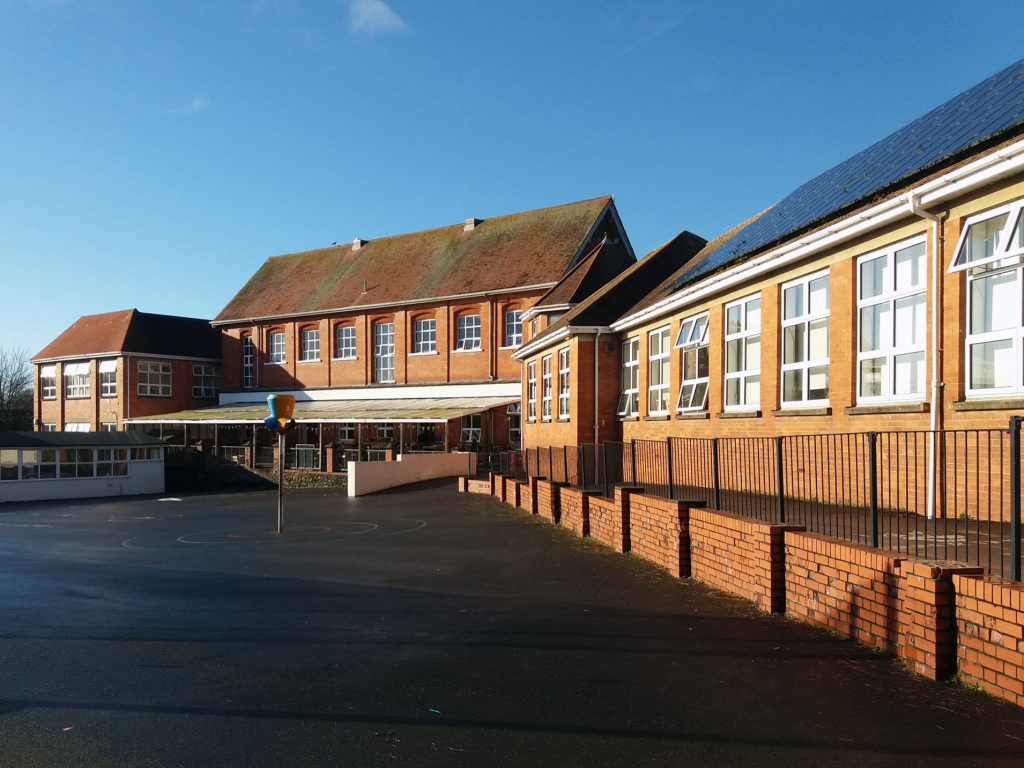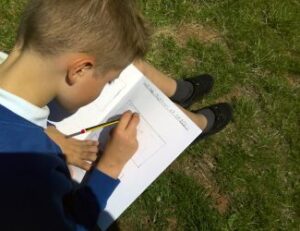
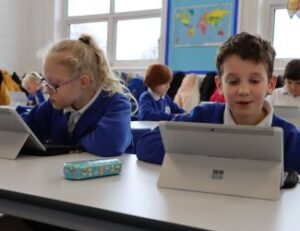
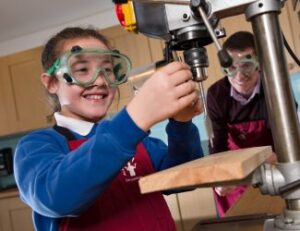
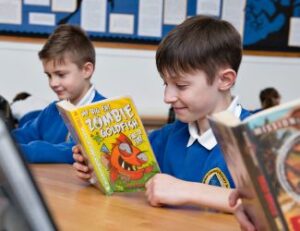
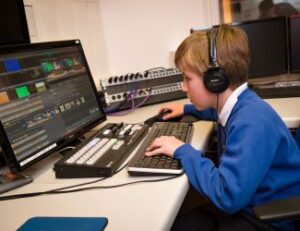
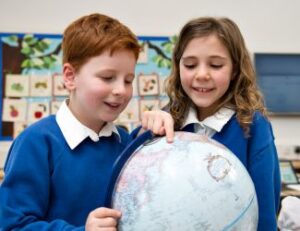
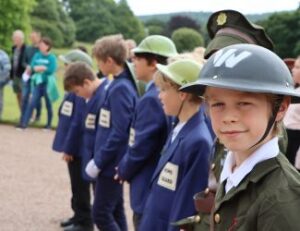
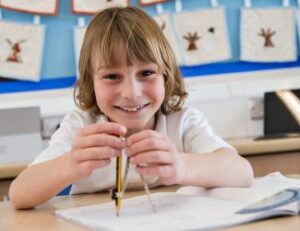


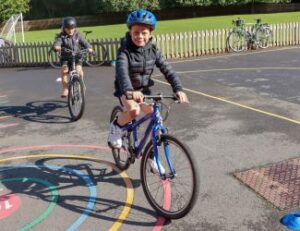
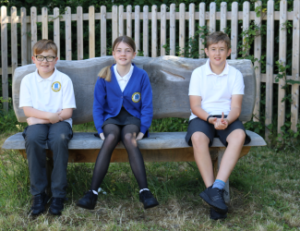
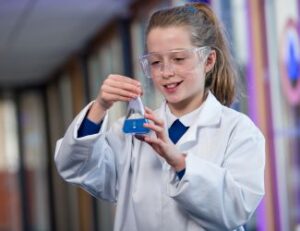
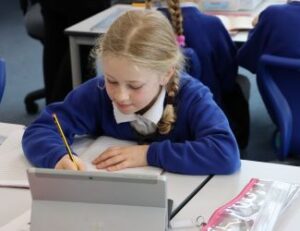
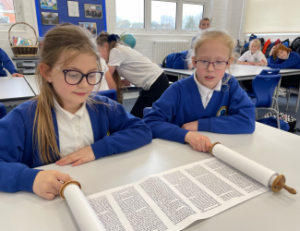
Spoken Language
- Ask relevant questions to extend their understanding and knowledge; take opportunities to learn new vocabulary across all subjects
- Explain what their opinions are and why they hold them, giving evidence in an increasingly articulate manner; give well-structured descriptions, explanations and narratives for different purposes, including for expressing feelings (to a level appropriate to age)
- Maintain attention and participate actively in collaborative conversations such as working together on a curriculum activity, staying on topic and initiating and responding to comments; use spoken language to develop understanding through speculating, hypothesising, imagining and exploring ideas (to a level appropriate to age)
- Speak clearly and audibly and fluently with an increasing command of Standard English; participate in discussions, presentations, performances, role play, improvisations and debates
- Gain, maintain and monitor the interest of the listener(s); consider and evaluate different viewpoints, attending to and building on the contributions of others; select and use appropriate registers for effective communication
Word Reading
- Apply their knowledge of root words, prefixes and suffixes (etymology and morphology) to read aloud and to understand the meaning of new words they meet
- Read exception words, noting the unusual correspondences between spelling and sound, and where these occur in the word
Reading – Comprehension
Engagement in Group and Class Reading
- Listen to and discuss a wide range of fiction, poetry, plays, non-fiction and reference books or textbooks
- Read books that are structured in different ways and reading for a range of purposes
- Use dictionaries to check the meaning of words that they have read
- Is beginning to increase their familiarity with a wide range of books, including fairy stories, myths and legends, and retells some of these orally
- Identify themes and conventions in a wide range of books
- Prepare poems and play scripts to read aloud and to perform, showing understanding through intonation, tone, volume and action
- Discuss words and phrases that capture the reader’s interest and imagination
- Recognise some different forms of poetry [for example, free verse, narrative poetry]
Independent Reading
- Check that the text makes sense to them, discuss their understanding and explain the meaning of words in context; ask questions to improve their understanding of a text
- Draws inferences such as inferring characters’ feelings, thoughts and motives from their actions, and justifies inferences with evidence; predicts what might happen from details stated and implied
- Identify main ideas drawn from more than one paragraph and summarises these
- Identify how language, structure, and presentation contribute to meaning
Writing
Spelling
- Use prefixes and suffixes and understand how to add them
- Spells further homophones
- Spells words that are often misspelt
- Places the possessive apostrophe accurately in words with regular plurals [for example, girls’, boys’] and in words with irregular plurals [for example, children’s]
- Use the first two or three letters of a word to check its spelling in a dictionary
- Write from memory simple sentences, dictated by the teacher, that include words and punctuation taught so far
Handwriting
- Use the diagonal and horizontal strokes that are needed to join letters and understand which letters, when adjacent to one another, are best left unjoined
- Ensure that the downstrokes of letters are parallel and equidistant; that lines of writing are spaced sufficient-ly so that the ascenders and descenders of letters do not touch
Grammar
- Extend sentences with more than one clause by using a wide range of conjunctions, including when, if, be-cause, although
- Use the present perfect form of verbs in contrast to the past tense; choose nouns or pronouns appropriately for clarity and cohesion and to avoid repetition
- Use conjunctions, adverbs and prepositions to express time and cause
- Use fronted adverbials with commas
- Use the possessive apostrophe with plural nouns; use and punctuates direct speech
- Use the grammatical terminology in English Appendix 2 accurately and appropriately when discussing their writing and reading
Composition
- Plan their writing by discussing writing similar to that which they are planning to write in order to understand and learn from its structure, vocabulary and grammar; discuss and record ideas
- Compose sentences orally (including dialogue), progressively building a varied and rich vocabulary using an increasing range of sentence structures
- Organise paragraphs around a theme; in non-narrative material, use simple organisational devices [for exam-ple, headings and sub-headings]
- Create settings, characters and a plot (during narrative writing)
- Evaluate and edit by assessing the effectiveness of their own and others’ writing by suggesting improve-ments; propose changes to grammar and vocabulary to improve consistency, including the accurate use of pronouns in sentences; proof-read for spelling and punctuation errors
- Read aloud their own writing, to a group or the whole class, use appropriate intonation and controlling the tone and volume so that the meaning is clear
Number and Place Value
- Count backwards through zero to include negative numbers
- Count in multiples of 6, 7, 9, 25 and 1 000
- Find 1 000 more or less than a given number
- Order and compare numbers beyond 1 000
- Compare numbers with the same number of decimal places up to two decimal places(copied from Fractions)
- Identify, represent and estimate numbers using different representations
- Read Roman numerals to 100 (I to C) and know that over time, the numeral system changed to include the concept of zero and place value.
- Recognise the place value of each digit in a four-digit number (thousands, hundreds, tens, and ones)
- Find the effect of dividing a one- or two-digit number by 10 and 100, identifying the value of the digits in the answer as units, tenths and hundredths(copied from Fractions)
- Round any number to the nearest 10, 100 or 1 000
- Round decimals with one decimal place to the nearest whole number (copied from Fractions)
- Solve number and practical problems that involve all of the above and with increasingly large positive numbers
Addition and Subtraction
- Add and subtract numbers with up to 4 digits using the formal written methods of columnar addition and subtraction where appropriate
- Estimate and use inverse operations to check answers to a calculation
- Solve addition and subtraction two-step problems in contexts, deciding which operations and methods to use and why
Multiplication and Division
- Count in multiples of 6, 7, 9, 25 and 1 000 (copied from Number and Place Value)
- Recall multiplication and division facts for multiplication tables up to 12 × 12
- Use place value, known and derived facts to multiply and divide mentally, including: multiplying by 0 and 1; dividing by 1; multiplying together three numbers
- Recognise and use factor pairs and commutativity in mental calculations (appears also in Properties of Numbers)
- Multiply two-digit and three-digit numbers by a one-digit number using formal written layout
- Estimate and use inverse operations to check answers to a calculation (copied from Addition and Subtraction)
- Solve problems involving multiplying and adding, including using the distributive law to multiply two digit numbers by one digit, integer scaling problems and harder correspondence problems such as n objects are connected to m objects
Fractions (including Decimals and Percentages)
- Count up and down in hundredths
- Recognise that hundredths arise when dividing an object by one hundred and dividing tenths by ten
- Compare numbers with the same number of decimal places up to two decimal places
- Round decimals with one decimal place to the nearest whole number
- Recognise and show, using diagrams, families of common equivalent fractions
- Recognise and write decimal equivalents of any number of tenths or hundredths
- Recognise and write decimal equivalents to 1/4; 1/2; 3/4
- Add and subtract fractions with the same denominator
- Find the effect of dividing a one- or two-digit number by 10 and 100, identifying the value of the digits in the answer as ones, tenths and hundredths
- Solve problems involving increasingly harder fractions to calculate quantities, and fractions to divide quantities, including non-unit fractions where the answer is a whole number
- Solve simple measure and money problems involving fractions and decimals to two decimal places.
Algebra
- Perimeter can be expressed algebraically as 2(a + b) where a and b are the dimensions in the same unit. (Copied from NSG measurement)
Measurement
- Estimate, compare and calculate different measures, including money in pounds and pence (also included in Measuring)
- Estimate, compare and calculate different measures, including money in pounds and pence (appears also in Comparing)
- Measure and calculate the perimeter of a rectilinear figure (including squares) in centimetres and metres
- Find the area of rectilinear shapes by counting squares
- Read, write and convert time between analogue and digital 12 and 24-hour clocks (appears also in Converting)
- Solve problems involving converting from hours to minutes; minutes to seconds; years to months; weeks to days(appears also in Converting)
- Convert between different units of measure (e.g. kilometre to metre; hour to minute)
- Read, write and convert time between analogue and digital 12 and 24-hour clocks(appears also in Converting)
- Solve problems involving converting from hours to minutes; minutes to seconds; years to months; weeks to days (appears also in Telling the Time)
Properties of Shapes
- Identify lines of symmetry in 2-D shapes presented in different orientations
- Complete a simple symmetric figure with respect to a specific line of symmetry
- Compare and classify geometric shapes, including quadrilaterals and triangles, based on their properties and sizes
- Identify acute and obtuse angles and compare and order angles up to two right angles by size
Position and Direction
- Describe positions on a 2-D grid as coordinates in the first quadrant
- Describe movements between positions as translations of a given unit to the left/right and up/down
- Plot specified points and draw sides to complete a given polygon
Statistics
- Interpret and present discrete and continuous data using appropriate graphical methods, including bar charts and time graphs
- Solve comparison, sum and difference problems using information presented in bar charts, pictograms, tables and other graphs.
Knowledge
Biology – Animals including Humans
- Describe the simple functions of the basic parts of the digestive system in humans.
- Identify the different types of teeth in humans and their simple functions.
- Construct and interpret a variety of food chains, identifying producers, predators and prey.
Biology – Living Things and Their Habitats
- Recognise that living things can be grouped in a variety of ways.
- Explore and use classification keys to help group, identify and name a variety of living things in their local and wider environment.
- Recognise that environments can change and that this can sometimes pose dangers to living things.
Chemistry – States of Matter
- Compare and group materials together, according to whether they are solids, liquids or gases.
- Observe that some materials change state when they are heated or cooled, and measure or research the temperature at which this happens in degrees Celsius (°C).
- Identify the part played by evaporation and condensation in the water cycle and associate the rate of evaporation with temperature.
Physics – Electricity
- Identify common appliances that run on electricity.
- Construct a simple series circuit identifying and naming its basic parts and their purposes, including cells, wires, bulbs, switches and buzzers.
- Recognise that a switch opens and closes a circuit and associate this with whether or not a lamp lights in a simple series circuit.
- Recognise some common conductors and insulators, and associate metals with being good conductors.
Physics – Sound
- Identify how sounds are made, associating some of them with something vibrating.
- Recognise that vibrations from sounds travel through a medium to the ear.
- Find patterns between the pitch of a sound and features of the object that produced it.
- Find patterns between the volume of a sound and strength of the vibrations that produce it.
- Recognise that sounds get fainter as the distance from the sound source increases.
Working Scientifically
Plan
- Ask relevant questions and use different types of scientific enquiries to answer them
- Set up simple practical enquiries, comparative and fair tests
Do
- Make systematic and careful observations and where appropriate, taking accurate measurements using standard units, using a range of equipment, including thermometers and data loggers
- Gather, record, classify and present data in a variety of ways to help in answering questions
- Record findings using simple scientific language, drawings, labelled diagrams, keys, bar charts, and tables
Review
- Report on findings from enquiries, including oral and written explanations, displays or presentations of results and conclusions
- Identify differences, similarities or changes related to simple scientific ideas and processes
- Use straightforward scientific evidence to answer questions or to support their findings
- Use results to draw simple conclusions, make predictions for new values, suggest improvements and raise further questions
Investigation/Experiments
- Teeth Damage Investigation – Pupils will observe the effects of a variety of different liquids on the shell of an egg. The enamel mimicking the human tooth.
- Build your own Water Cycle – Pupils will make their own contained water cycle to observe the evaporation, condensation and precipitation process.
- Morse Code Machines – Pupils use their circuitry knowledge to develop morse code machines capable of sending secret messages.
- String Telephones – Pupils are once again challenged to send secret messages – can you send a message more swiftly through solid, liquid or gas?
- Kingfisher Field Study – In this Local Field Study led by the Kingfisher Organisation pupils will be asked to investigate an area of British Wildlife. Here pupils will consider the food chains living locally that are affected by this project title. Here pupils will look at classifying local wildlife and consider the environmental impact change can have on local community.
An era of World History: Anglo-Saxons and Vikings
- To build upon the Roman Empire of Year 3, why the Romans left Britain and the fall of Rome in 410AD.
- To explore life after Romans and the birth of the Anglo-Saxons.
- To understand the slow Christian conversion of the country from the Pagan gods.
- About the life of Abbot Hadrian, a North African Churchman sent to Britain by Pope Gregory.
- To consider the influence Hadrian had on the church of England and lives of people today.
- About Anglo-Saxon rule and the five major kingdoms.
- To consider the storytelling ability of the era, as well as other arts and culture.
- To understand the Viking and Anglo-Saxon conflict.
- About Viking fighting style, as well as raiding and exploring as part of the Scandinavian Culture.
- Who Alfred the Gret was and the important role he played in Anglo rule.
- When the era ended in 1066 with the Battle of Hastings.
A Local Historical Study: Victorian Britain
- To explore life in the Victorian era and how it differs from today.
- About the British Empire’s origin, conclusion and strength during the era.
- About the Empire’s earlier role in the Slave Trade, considering displacement and disruption.
- To use prior knowledge around Greek and Roman slaves to apply to the slave trade.
- To consider the role children had at the time, from jobs to school.
- To gain an understanding into the role of women in the era.
- To expand upon Year 3 knowledge and investigate key inventors and inventions of the era.
- Discuss how different attitudes were towards black people in Victorian Britain and the changes that were already beginning to happen.
An investigative chronological enquiry: ‘What would the world be like today without these women?’
- To investigate a range of important women from throughout history.
- To recognise the impact of events in the past on modern life.
- To use relevant phrases and vocabulary to support in enquiry.
- To place key events on a timeline and use this to support the retelling of past events.
- To draw comparisons between our lives today and the lives of others in the past.
An Area of Human Geography: Climate Zones
- To locate specific world countries (Russia, China, India, Japan, Australia) from different continents and identify capital cities and relevant human features.
- To consider why country borders may exist and how they could shift over time.
An area of Physical Geography: Climate Zones
- To locate specific world countries (Russia, China, India, Japan, Australia) from different continents and identify their environmental regions, climate zones and additional key physical features.
- To describe and understand different climate zones and biomes, and why they exist.
- To describe and understand the water cycle and the part it plays in vegetation belts and climate zones.
- To describe and understand north and south hemispheres, tropics of Capricorn and Cancer and the arctic circle.
A range of Geographical skills: Map Reading, Map Making & Fieldwork
- To use world maps, atlases, globes and digital maps to consider time zones.
- To use simple grids and give directional instructions up to 8 cardinal points.
- To use six-figure coordinates to locate features.
- To devise a map of a short route with features labelled and to scale.
- To make a plan of a garden, play park to scale.
- To use digital maps to highlight and measure area.
- To use digital maps to search by grid reference.
- Use fieldwork and observational skills to measure, record and present physical and human features of a local area, including a range of methods: sketch maps, plans, graphs and digital technologies.
- To consider the importance of qualitative and quantitative data through a local farming project.
MFL Links: Spanish Climate
- To explore other Spanish speaking countries and compare the climate of these locations.
- To identify weather patterns in Britain and these countries.
- To plot these countries on a map, talking about their location to the equator and the hemispheres.
Learning about Religion: Place of Worship
- About different places of worship and why they hold importance to people.
- To identify acts of worship for different beliefs.
- To consider important festivals that are celebrated and why they are important.
Learning from Religion: ‘What is worship and does it have to happen in a special place?’
- To explore the variety of practices and ways of life for different beliefs.
- To question the difference between buildings of the same faith.
- To understand how religious festivals are related to key figures, events and stories.
- To consider the important of places of worship visited within their local community.
British Council Theme for Global Citizens: Sustainable Living
- To become more eco-aware and informed about sustainability.
- What is causing climate change and consider the impact humans can have on this.
- To appreciate the importance of the world and its maintenance.
Computer Science
- To create programs by planning, modifying, and testing commands to create shapes and patterns.
- To write algorithms using the text based language logo.
- To explore and read code based uses of repetition in programming using the Scratch and MakeCode environments
- To compare and contrast the similarities between two environments.
- To identify the difference between count-controlled and infinite loops, and modify existing animations and games using repetition.
- To design and create a game which uses repetition, applying stages of programming design throughout.
Information Technology
- To learn how a flat-file database can be used to organise data in records.
- To use tools within a database to order and answer questions about data.
- To create graphs and charts from the data to help solve problems.
- To use a real-life database to answer a question, and present work to others.
- To develop their understanding of how digital images can be changed and edited, and how they can then be resaved and reused.
- To consider the impact that editing images can have, and evaluate the effectiveness of their choices.
- To examine devices capable of recording digital audio, which will include identifying the input device (microphone) and output devices (speaker or headphones).
- To understand about ownership of digital audio and the copyright implications of duplicating the work of others.
- To record using Audacity and BandLab to produce a podcast, which will include editing their work, adding multiple tracks, and opening and saving the audio files.
- To apply their knowledge and understanding of networks, to appreciate the internet as a network of networks which need to be kept secure.
- To learn that the World Wide Web is part of the internet, and be given opportunities to explore the World Wide Web for themselves to learn about who owns content and what they can access, add, and create.
- To evaluate online content to decide how honest, accurate, or reliable it is, and understand the consequences of false information.
Digital Literacy
- To use technology safely, respectfully and responsibly; recognise acceptable/unacceptable behaviour; identify a range of ways to report concerns about content and contact.
Sewing the Seasons
- The children will learn how to thread a needle.
- How to sew using a running stitch.
- The children will be challenged to pick an appropriate fabric and colour for their chosen season.
Christmas Card Design
- TBC
Still Life Painting
- Explore the effect on paint of adding water, glue, sand, sawdust and use this in a painting.
- Represent things observed, remembered or imagined, using colour selecting appropriate paint and brushes.
- Use a viewfinder to select a view and visual clues in an image, then record what is in the frame
- Plan the use of a camera to take a specific photo or set of photos
- Building upon painting techniques from previous years, learn about specific techniques such as impasto.
- Learning when and how to use different brushes for varying purposes using acrylic paint.
Mayan Mask Making
- They will develop the following techniques: painting, cutting, folding, sticking.
- Learning how to apply to paint to a functional object (mask).
- Represent things observed, remembered or imagined, using colour selecting appropriate paint and brushes
- Introduces different types of brushes for specific purposes
- Improve skills of overlapping and overlaying to place objects in front and behind
- Cut multiple shapes with scissors and arrange /stick these on a surface for a purpose
Roman Clay Coil Pot
- Building on clay manipulation skills children apply these skills in a more controlled and precise way and using modelling tools to enhance work: rolling, coiling, score, slip, stick.
- Use clay to construct a simple functional form such as a coil pot, smoothing and joining clay with care.
- Build in clay a functional form using two/three building techniques and some surface decoration
Representing Form via Drawing:
- To show light and dark and depict form and depth using shading techniques
- Light and darks – creating form using chalk and charcoal.
Roman Portraiture/Busts – Drawing a Profile from a Photo
- Using photography and shadows – tracing to capture an accurate image.
- Adding detail then reducing scale digitally.
- Plan the use of a camera to take a specific photo or set of photos
- Uses line, tone, shape and mark with care to represent things seen, imagined or remembered.
- Experiment with creating mood, feeling, movement and areas of interest using different media.
- Use a painting program to make an image corresponding to their work in painting and digital collage to create a portrait in profile.
Shang Dynasty Inspired Art – Wax Etchings
- New technique of etching requires fine drawing skills which adds to drawing skills learnt in previous projects.
- Introducing textures and effects from drawing upon different materials.
- Observe patterns from vases and artefacts.
- Recreate a pattern inspired by vases from the Shang Dynasty.
Watercolour Landscapes
- Applying paint in a different way to that of the impasto techniques that were previously taught.
- Using water as a basis for the painting from water washes; applying with a wide brush (not previously introduced).
- Observing and learning how the paint behaves differently to other paints to create different effects and textures.
Knowledge
- Use research and develop design criteria to inform the design of innovative, functional, appealing products that are fit for purpose, aimed at particular individuals or groups.
- Generate, develop, model and communicate their ideas through discussion, annotated sketches, cross-sectional and exploded diagrams, prototypes, pattern pieces and computer-aided design.
- Select from and use a wider range of materials and components, including construction materials, textiles and ingredients, according to their functional properties and aesthetic qualities.
- Evaluate their ideas and products against their own design criteria and consider the views of others to improve their work. Understand and apply the principles of a healthy and varied diet.
- Prepare and cook a variety of predominantly savoury dishes using a range of cooking techniques.
- Understand seasonality, and know where and how a variety of ingredients are grown, reared, caught and processed.
Project
- Eggy Challenge: Rockets – Pupils create a rocket out of recycled materials. The rocket needs to be able to hold and protect an egg from the impact of landing.
- Kingfisher Project: Create a product that links to the focus on the project. This is based around an environmental goal that is run locally. Pupils bake flapjack using local ingredients.
Singing
- Continue to sing a broad range of unison songs with the range of an octave pitching the voice accurately and following directions for getting louder (crescendo) and quieter (decrescendo).
- Sing rounds and partner songs in different time signatures and begin to sing repertoire with small and large leaps as well as a simple second part to introduce vocal harmony.
- Perform a range of songs in school assemblies.
Listening
The following styles of music will be introduced as well as recapping on styles that have been taught in previous years.
Western Classical Tradition and Film:
- Classical- Beethoven
- Early- Hildegard
- 20th Century- Rutter
Popular Music:
- Jazz- Billy Strayhorn/ Duke Ellington Orchestra
- 90s Indie- Oasis
Musical Traditions:
- Punjab/UK- Bhangra- Bhujhangy Group
- Trinida- Calypso- Trinidad Steel Band
Improvise
- Improvise on a limited range of pitches on the instrument they are now learning, making use of musical features including smooth (legato) and detached (staccato).
- Begin to make compositional decisions about the overall structure of improvisations. Continue this process in the composition objectives below.
Compose
- Combine known rhythmic notation with letter names to create short pentatonic phrases using a limited range of 5 pitches. Sing and play these phrases as self-standing compositions.
- Arrange individual notation cards of known note values (i.e. minim, crotchet, crotchet rest and paired quavers) to create sequences of 2-, 3- or 4-beat phrases, arranged into bars.
- Compose music to create a specific mood, for example creating music to accompany a short film clip.
- Introduce major and minor chords.
- Include instruments played in whole-class/group/individual teaching to expand the scope and range of the sound palette available for composition work.
- Capture and record creative ideas using any of: graphic symbols, rhythm notation and time signatures, staff notation and technology.
Performing
- Develop facility in the basic skills of Violin/Brass over two terms..
- Play and perform melodies following staff notation using a small range
- Perform in two or more parts (e.g. melody and accompaniment or a duet) from simple notation using instruments played in whole class teaching. Identify static and moving parts.
- Copy short melodic phrases including those using the pentatonic scale (e.g. C, D, E, G, A).
Reading Notation
- Introduce and understand the differences between minims, crotchets, paired quavers and rests.
- Read and perform pitch notation within a defined range.
- Follow and perform simple rhythmic scores to a steady beat: maintain individual parts accurately within the rhythmic texture, achieving a sense of ensemble.
Relationships: Respect for self and others; courteous behaviour; safety; human rights
- How people’s behaviour affects themselves and others, including online
- How to model being polite and courteous in different situations and recognise the respectful behaviour they should receive in return
- About the relationship between rights and responsibilities
- The rights that children have and why it is important to protect these
- That everyone should feel included, respected and not discriminated against; how to respond if they witness or experience exclusion, disrespect or discrimination
- How to respond to aggressive or inappropriate behaviour (including online and unwanted physical contact) – how to report concerns
Health and Wellbeing: Self-esteem: self-worth; personal qualities; goal setting; managing setbacks; feelings and emotions; expression of feelings; behaviour; Growing and changing; puberty; keeping safe; out and about; recognising and managing risk
- How to recognise personal qualities and individuality
- To develop self-worth by identifying positive things about themselves and their achievements
- How their personal attributes, strengths, skills and interests contribute to their self-esteem
- How to set goals for themselves
- How to manage when there are set-backs, learn from mistakes and reframe unhelpful thinking
- How everyday things can affect feelings
- How feelings change over time and can be experienced at different levels of intensity
- The importance of expressing feelings and how they can be expressed in different ways
- How to respond proportionately to, and manage, feelings in different circumstances
- Ways of managing feelings at times of loss, grief and change
- How to access advice and support to help manage their own or others’ feelings
- How to recognise, predict, assess and manage risk in different situations
- How to keep safe in the local environment and less familiar locations (e.g. near rail, water, road; fire/firework safety; sun safety and the safe use of digital devices when out and about)
- How people can be influenced by their peers’ behaviour and by a desire for peer approval; how to manage this influence
- How people’s online actions can impact on other people
- How to keep safe online, including managing requests for personal information and recognising what is appropriate to share or not share online
- How to report concerns, including about inappropriate online content and contact
- That rules, restrictions and laws exist to help people keep safe and how to respond if they become aware of a situation that is anti-social or against the law
- How medicines (including vaccinations and immunisations) can help people stay healthy and that some people need to take medicines every day to stay healthy
- Growing up and changing bodies linking to lifecycles
- How everyday health and hygiene rules and routines help people stay safe and healthy (including how to manage the use of medicines, such as for allergies and asthma, and other household products, responsibly)
- How to react and respond if there is an accident and how to deal with injuries including scratches, grazes, burns, head injuries and seizures
- What to do in an emergency, including calling for help and speaking to the emergency services
Living in the Wider World: Caring for others; the environment; people and animals; shared responsibilities, making choices and decisions
- How people have a shared responsibility to help protect the world around them
- How everyday choices can affect the environment
- How what people choose to buy or spend money on can affect others or the environment (e.g. Fairtrade, single use plastics, giving to charity)
- The skills and vocabulary to share their thoughts, ideas and opinions in discussion about topical issues
- How to show care and concern for others (people and animals)
- How to carry out personal responsibilities in a caring and compassionate way
- Use running, jumping, throwing and catching in isolation and in combination.
- Play competitive games, modified where appropriate, and apply basic principles suitable for attacking and defending.
- Create and perform different actions that work in sequence using floor or apparatus in order to develop flexibility, strength, technique, control and balance.
- Run for shorter and longer distances, recognising the need to adapt pace in Athletics based on the event.
- Create and perform controlled movement patterns of increasing length in Dance.
- Experience outdoor and adventurous activity both individually and within a team.
- Compare and evaluate their performances with previous ones.
- Swim competently, confidently and efficiently over a distance of at least 25 metres.
- Use a range of strokes effectively, including front crawl, backstroke and breaststroke.
- Perform safe self-rescue in different water-based situations.
- Engage with the outdoors through swamp walk and night hikes – working together to identify noticeable plants and animals.
- Learn about animals of Britain and how they are useful to the ecosystem.
- Take part in outdoor and adventurous activity challenges both individually and within a team
- Recognise that environments can change and that this can sometimes pose dangers to living things.
- Explore and use classification keys to help group, identify and name a variety of living things in their local and wider environment
- Grow the necessary vegetables to create a main meal to eat
Language Knowledge
- Numbers to 100
- To hold a conversation about themselves (including topics from previous years)
- Jobs and professions (where people work and what they do)
- Telling the time (hours, times in the day, morning, afternoon)
- Countries around the world
- Compass points
- Holiday locations
- Packing for a holiday
- At the airport
- Seasons/basic weather
Speaking and Listening
- I can listen carefully to spoken Spanish and respond.
- I can speak in basic sentences, using familiar vocabulary and phrases.
- I can lead in and appreciate stories, songs, poems and rhymes in Spanish.
- I can pronounce and intonate most words accurately so that others understand me when I am reading aloud or using familiar words and phrases.
- I can engage in conversations; ask and answer questions; express opinions and respond to those of others; seek clarification and help.
- I can present ideas and information orally to the class.
- I can describe people, places, things and actions orally.
Reading and Writing
- I can link the spelling, sound and meaning of words.
- I can spell basic vocabulary, forming simple Spanish sentences.
- I can read carefully and show understanding of words, phrases and simple writing in Spanish.
- I can write phrases from memory.
- I can describe people, places, things and actions in writing.
Year 4
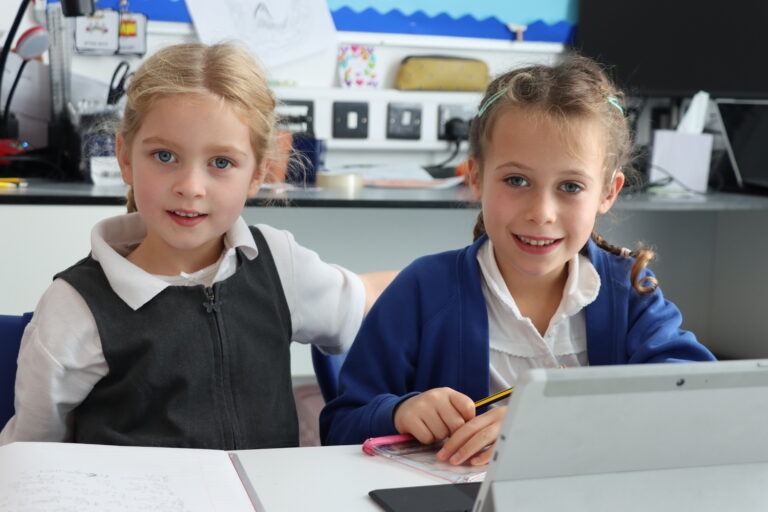
Year 4 continues to explore wider world themes, such as sustainability, encouraging children to discuss and debate world issues. Additionally, Year 4 take the National Multiplication Tables Check in the summer term. With a strong promotion of collaborative projects, Year 4 hopes to excite, motivate and encourage inquisitive thinking.
Our Year 4 Teachers

Broadclyst
Harry Watkins

Mokerton
Kerry Jackson

Monkerton
Lauren Seldon

Westclyst
Ellie Merrick

Westclyst
Judith Simpson

Yeo valley
Kayleigh Baker
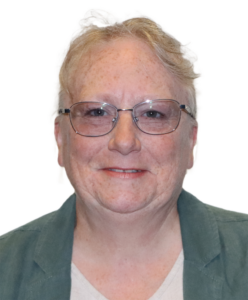
Marpool
Julie Merrick
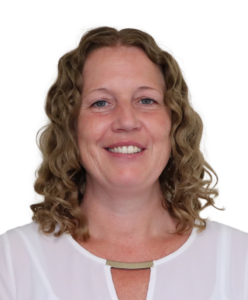
Marpool
Leanne Caldock




